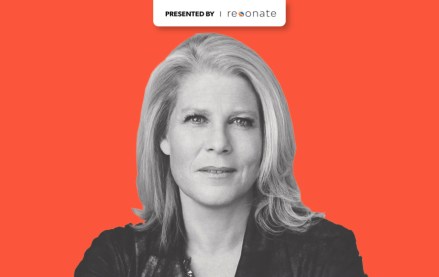LittleThings boosted ad rates by 20 percent with video header bidding
Although header bidding has a video problem, feel-good publisher LittleThings is getting unified auctions for its video inventory to pay off.
Adopting video header bidding helped LittleThings increase its programmatic video ad rates by about 20 percent over the past 12 months, said Justin Festa, chief digital officer at LittleThings, declining to share raw numbers. LittleThings avoided a slowdown of its ad loads by putting videos at the bottom of its articles and not using autoplay, so webpages are fully loaded by the time users click on the video player to initiate video ad calls, Festa said.
For example, in an article about Thanksgiving side dish recipes, there are six paragraphs about food that precede the overhead hands-in-pans video, which sits at the bottom of the post. LittleThings recently pivoted its video strategy by laying off 13 people and shrinking the number of shows it produces for Facebook Live. It also diversified its video distribution by creating a “postproduction” team of five people that works on publishing LittleThings’ video content across platforms like Amazon, Apple TV, Roku and Tubi TV. LittleThings receives about 80 million to 120 million video views a month on its website, Festa said.
Given that ad buyers are pouring money into video and header bidding has helped publishers increase their display ad rates, it’s logical that publishers would use video header bidding to increase their video ad revenue. But video header bidding has been slow to take off because header bidding’s latency problems are more acute with video, and most publishers continue to sell the bulk of their video inventory direct.
The phrase video header bidding is also a misnomer since there isn’t a header in video. But the idea of header bidding — where publishers simultaneously offer inventory to multiple exchanges before making calls to their ad servers — persists within video, so publishers and vendors that sell video inventory programmatically through unified auctions still use the phrase.
A year ago, LittleThings began testing video header bidding with Index Exchange’s wrapper tag and has since added a handful of supply-side platforms to its wrapper.
LittleThings uses header bidding to sell about 30 percent of its video inventory. For the rest, it uses other selling methods like direct sales and Google’s dynamic allocation. About 40 million people visited LittleThings in October, according to comScore.
Setting up video header bidding is more difficult than setting up header bidding for display, which explains why LittleThings sells a limited amount of its video ad space using header bidding. For one, there’s another middleman with video header bidding.
With display header bidding, a publisher only needs to work with an SSP. For video header bidding, the publisher needs to make sure its video player and SSP are on the same page when it comes to serving video ads. Since adopting video header bidding, Festa and LittleThings’ tech team of eight people have been in frequent contact with the publisher’s SSPs and video player to ensure everything is being implemented correctly.
Another thing that makes video header bidding hard to set up is that video ad tags are much more complicated than display ad tags, said Brian Rifkin, co-founder of video vendor JW Player. For example, advertisers will push Flash-based VPAID or VAST tags through an exchange even if the exchange no longer accepts Flash. When this happens, the ad gets blocked from loading, and the publisher loses potential ad revenue on wasted impressions.
“Video is a totally different auction than display,” Festa said. “No matter what wrapper you use, you can’t just check a box and suddenly have video [header bidding]. It’s its own setup.”
More in Media

With a new ‘answer engine,’ Brave browser adds another generative AI tool for search
The privacy focused browser’s new tool is the latest to offer a synthesized summary for queries using its independent index.

NBA CMO Henault: How the league added music and fashion to its bench strength
Tammy Henault, CMO of the NBA, shared some of the strategies that helped the association stand out from other pro sports leagues.

‘Beginning to be the practical’: GE global CMO Linda Boff on the evolution of AI in marketing
Boff pointed to market research as an area where AI is beginning to have an impact, in a good way, on an industry feature that has lingered in the traditional.








